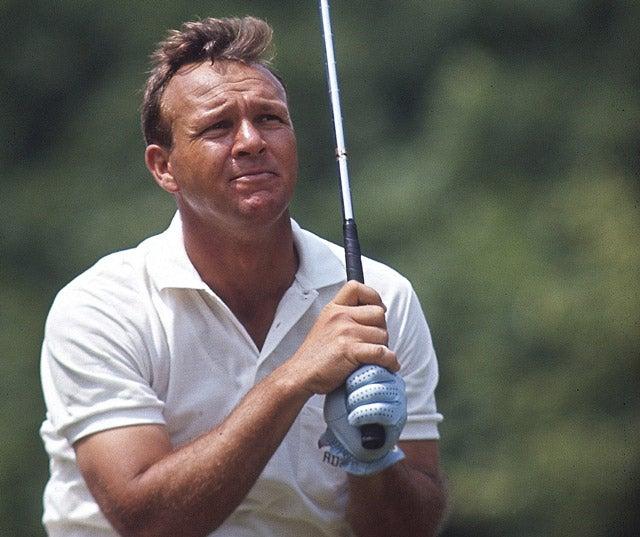Introduction
Arnold Palmer, a legendary figure in the world of golf, transformed both the gameplay and its perception, leaving a lasting influence on golfers at all levels. His illustrious career is marked by numerous titles and accolades that reflect not just his physical abilities but also a profound grasp of the game that integrates technical skill, mental strength, and strategic insight. This article aims to dissect Palmer’s techniques that played a pivotal role in his golfing success. By drawing from various resources—including Palmer’s own instructional insights and expert evaluations of his swing mechanics—we will delve into essential elements such as grip, stance, and swing sequence that characterized his mastery. Additionally, this exploration seeks to place Palmer’s methods within the broader context of modern golfing instruction, offering valuable perspectives for current players looking to elevate their performance through principles advocated by one of golf’s most esteemed practitioners. Through an examination of Palmer’s distinctive approach, this article aspires to deepen appreciation for the intricate relationship between technique and mindset in achieving excellence in golf.
Core Techniques: Grasping Golf Swing Mechanics
Arnold Palmer’s methodology regarding the golf swing is rooted in fundamental techniques that merge power with precision and consistency. His grip and stance are critical components contributing to effective swing mechanics. Adopting a firm grip allowed him to maintain control throughout his motion while ensuring a strong connection between clubface and ball. This controlled grip combined with an optimal stance set up effectively for addressing each shot.
- Feet shoulder-width apart for enhanced stability.
- Knees slightly bent promoting an athletic posture.
- Weight evenly distributed across both feet for improved balance.
A key aspect when analyzing Palmer’s swing mechanics is understanding lower body dynamics; these movements acted as power generators behind his swings—creating critically important force and speed. By initiating swings with precise lower body rotation, he ensured fluidity from backswing through impact—a coordination leading to efficient energy transfer affecting clubhead speed directly.
- Hip rotation: Initiated downswing movement effectively.
- Foot positioning: Provided leverage along with solid grounding.
- Synchronized weight shift: Enhanced balance during swings.
The seamless execution seen in Palmer’s mechanics can be attributed largely to rhythm cultivated over years; smooth transitions from backswing into downswing showcased how he balanced speed with control adeptly—this rhythm was not merely instinctual but developed through extensive practice aligned with self-awareness regarding physical capabilities. Furthermore, Palmer’s innovative approach to head movement during the swing emphasized its role in creating natural timing and flow. His practice illustrates that authenticity in swing techniques can yield superior results compared to rigid adherence to guidelines:
- A consistent tempo, maintained throughout each phase of swinging motion.
- A fluid motion, integrating all body parts harmoniously together.
- A composed follow-through, ensuring stability post-shot execution.
Mental Resilience: Building Psychological Strength for Competition
| Hole Aspect | Consideration |
|---|---|
| Weather | Assess the impact of wind and conditions on shot selection. |
| Hazards | Evaluate course hazards to inform shot decisions. |
| Personal Skill | Factor in personal strengths and recent performance to guide decisions. |
In essence, mastering golf transcends mere skill necessitating a robust comprehension of management principles. Arnold Palmer’s techniques provide a foundational framework encouraging a blend of strategy, execution, and continuous evaluation and adjustment of approaches, enabling players to navigate challenges more effectively, leading to improved outcomes on the greens.
The Meaning of Consistent Practice: Establishing Improvement Routines
Consistent practice forms the cornerstone of improvement, enhancing technical abilities while together building resilience. By establishing structured routines that allow systematic work on various aspects of the game—from swinging mechanics to course management—focused sessions enable concentration on specific skills, solidifying understanding and executing fundamentals. Key components of a well-organized routine include:
- Dedicated time for each skill area.
- Incorporation of mental training techniques alongside physical practice.
- Consistent reflection and adjustment of strategies.
An effective routine integrates both physical and mental elements. Practicing aspects like putting and driving is equally crucial while focusing on psychological facets including developing consistent pre-shot routines that foster confidence and concentration. Routinely practicing these skills reinforces performance under pressure. Adopting a holistic approach leads to better mechanics and improved decision-making on the course.
To illustrate the impact of consistency, consider the structured schedule employed by professionals like Arnold. Below is an example timetable incorporating various techniques to enhance performance:
| Practice Day | Focus Area | Duration |
|---|---|---|
| Monday | Short Game (Chipping, Putting) | 1.5 Hours |
| Wednesday | Full Swing (Driving Range) | 2 Hours |
| Friday | Course Management (Play 9 Holes) | 3 Hours |
Implementing discipline emphasizes significant improvements in a golfer’s performance. Regular, deliberate practice fosters greater proficiency and confidence, enabling players to navigate challenges with ease. Thus, whether a beginner or experienced golfer, dedication proves invaluable on the road to mastering the game.
Emphasizing Sportsmanship: The Role of Respect and Integrity in Mastery of Golf
In the pursuit of excellence, sportsmanship intertwines with technical skill to create the foundation of true mastery. Arnold Palmer’s renowned prowess and admirable character exemplified respect towards the game and fellow players, enhancing the experience for all involved. He frequently stated that embracing the spirit of respect and integrity is crucial for honing accuracy and decision-making, ultimately improving performances. Central to his legacy is the idea that respectful engagement fosters camaraderie and goodwill among players, involving recognition and celebration of successes regardless of the outcome.
Key tenets of respectful engagement include:
- Respect Your Opponents: Acknowledge the skills and efforts of others.
- Maintain Integrity: Adhere to the rules and exhibit fair play.
- Embrace Challenges: View difficulties as opportunities for growth.
- Encourage Fellow Golfers: Support others in their journey, whether in victories or defeats.
Moreover, integrity remains at the heart of the game, defined by adherence to established rules and self-regulation, reinforcing fairness and honesty as paramount virtues in the golfing community. An insightful comparison of attitudes reveals how Palmer’s harmonious blend of traditional ethics and modern approaches continues to inspire and shape respectful gameplay among golfers.
| Value | Palmer Approach | Traditional Ethics |
|---|---|---|
| Respect | Acknowledgment of opponents and skills, fostering sportsmanship. | Encouragement and acknowledgment of fellow players. |
| Integrity | Self-officiating and fairness through adherence to rules. | Strict compliance and fairness standards. |
| Community | Building relationships to promote the spirit of the game. | Community engagement and collective respect. |
Arnold Palmeraspiring golfersgolfGolf Masterygolf principlesGolf StrategiesGolf TrainingGolfing Techniquesgolfing tipslegacy of Arnold PalmerMental Resilience**performance enhancementskill developmentSports PsychologyStrategic Thinkingtechnical skill




